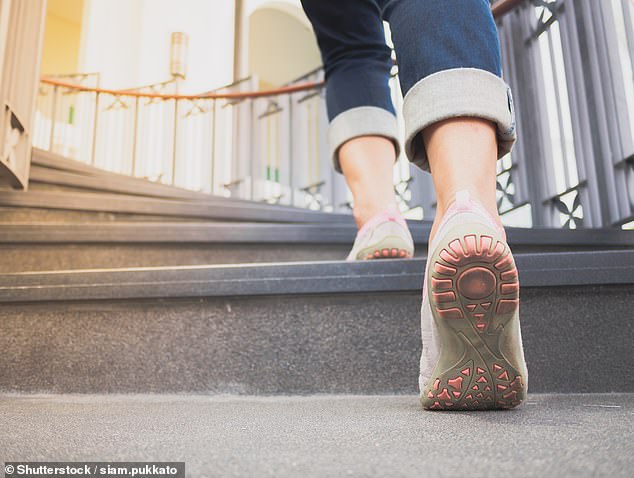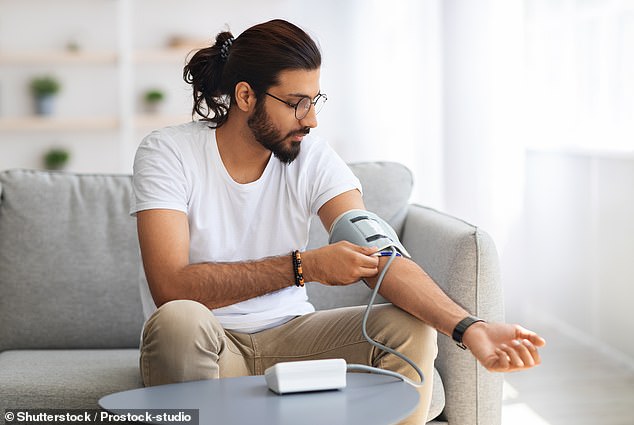Featured
- Get link
- X
- Other Apps
How Just 5 Minutes of Daily Exercise Can Lower Your Blood Pressure
As little as five minutes of daily physical activity can reduce blood pressure and aid in preventing cardiovascular issues, according to research findings.
Incorporating brief periods of physical activity into your everyday schedule – like choosing the stairs over the elevator or going for a bike ride – can lead to improved measurements.
Experts suggest that minor adjustments to daily habits, such as replacing five minutes of television viewing with five minutes of jogging, can substantially improve cardiovascular well-being.
The research indicates that exercises which increase your heartbeat, such as dancing, running, or even thorough housecleaning, offer the most advantages.
Researchers from University College London University College London (UCL) and the University of Sydney examined 14,761 individuals utilizing activity trackers to investigate the connection between their everyday movements and blood pressure levels.
Throughout the day, individuals typically allocated approximately seven hours for sleep, ten hours engaged in sedentary activities like sitting, three hours standing, one hour of slow walking, another hour of brisk walking, and about 16 minutes partaking in exercises that elevated their heart rates, including jogging and biking.


An extra five minutes of exercise which raises the heart rate, such as stair climbing, running or cycling - in exchange for any of the other behaviours - was found to lower systolic blood pressure (SBP) by 0.68 millimetres of mercury (mmHg) and diastolic blood pressure (DBP) by 0.54mmHg2.
The systolic value is the upper figure in a blood pressure measurement, indicating the pressure exerted when the heart pumps blood throughout the body. The diastolic value is the lower number, representing the pressure during the intervals when the heart is at rest between contractions.
According to the researchers, at a population level, decreasing systolic blood pressure (SBP) by 2 mmHg and diastolic blood pressure (DBP) by 1 mmHg is roughly akin to cutting the risk of heart disease by about 10 percent.
The study in Circulation suggests this can be accomplished by shifting 20-27 minutes away from other activities towards exercise for the higher figure, and redistributing 10-15 minutes for the lower figure.
For example, with systolic blood pressure, swapping 21 minutes of sedentary time, 22 minutes of standing or 26 minutes of slow walking for exercise such as cycling or jogging would have this effect.
For diastolic blood pressure, the benefits would arise from swapping 10 minutes of fast walking, 11 minutes of sedentary time or 13 minutes of sleeping for proper exercise.
High blood pressure is the leading cause of strokes and heart attacks in the UK, with around 14million adults are thought to have it including around five million without a diagnosis.
If left untreated, the heart may become enlarged over time due to the increased pressure, pumping less effectively and can lead to heart failure.
Lead author Dr Jo Blodgett, of UCL, said: ‘Our findings suggest that, for most people, exercise is key to reducing blood pressure, rather than less strenuous forms of movement such as walking.
‘The good news is that, whatever your physical ability, it doesn’t take long to have a positive effect on blood pressure.
‘What’s unique about our exercise variable is that it includes all exercise-like activities, from climbing the stairs to a short cycling errand, many of which can be integrated into daily routines.
‘For those who don’t do a lot of exercise, walking did still have some positive benefits for blood pressure.
‘But if you want to change your blood pressure, putting more demand on the cardiovascular system through exercise will have the greatest effect.’
Read more- Get link
- X
- Other Apps
Popular Posts
ABC Apologizes After Claudia Long Fabricates False Claims About Two High-Profile Politicians
- Get link
- X
- Other Apps
Tokyo Stocks Dip as Wall Street Suffers Losses
- Get link
- X
- Other Apps
Comments
Post a Comment